Characteristic signs
Colonial style is a mixture of ethnic details in one interior. The colonialists decorated their homes in the conquered territories using European elements. And on the contrary, they brought oriental notes to their homeland. Moreover, the subspecies have their own characteristics depending on the countries:
- The English colonial style is distinguished by the presence of a fireplace, arched windows and doors, and upholstered furniture in Indian style.
- In the American colonial style, mansard roofs, plastering in decoration, a minimum of embossed decorations are often found.
- The Spanish colonial style is distinguished by the active use of oriental, especially Moorish motifs.
The distinctive colonial interior is also distinguished by common features:
- Large windows and glass doors. The latter, preferably, should go out into a beautiful garden.
- Wooden elements. This also applies to massive furniture, shutters and doors.
- Screens and curtains. It is customary for them to zone the space.
- Natural materials. Wood, stone, copper, clay, cotton - all this is present in the colonial style.
- Calm shades. They form the basis, but can be diluted with bright accents. Unusual prints are everywhere - on the floor, walls, furniture, accessories.
Style colors
A colonial-style room is most often light, made in pastel colors. This is due to the influence of the climate - in hot countries such a palette is refreshing. At the same time, white and other light colors of the colonial style are most often used in decoration, and they prefer dark furniture - for example, mahogany.
In the photo, the colonial style in the interior of the living room
Colonial style in the interior also welcomes bright colors. The rich, dynamic interiors fell in love with Europeans first of all, for them such a design was exotic. Whichever color scheme you choose, give preference to natural shades: ocher, mahogany, coral, olive, linen, almond, terracotta.
Finishing materials
Start decorating your colonial-style apartment from the ceiling. Most often it is painted, but the use of beams is also popular. This solution looks especially good on sloping mansard roofs, but a straight ceiling will also look attractive.
The walls are also painted or wallpaper is glued. The tint of walls in colonial interiors is usually lighter than furniture - they should not draw attention to themselves. Therefore, if you choose wallpaper with a pattern, let it be small and not contrasting. Natural bamboo or jute wallpapers and rattan panels correspond to the philosophy of colonial houses.
In the photo there is a fresco on the wall behind the sofa
Colonial flooring varies by room. In the living room and bedroom, it is best to make a wooden floor, in the kitchen or in the bathroom, put ceramic tiles. To accentuate, use tiles with exotic patterns.
If the room has niches or bay windows, emphasize them, this will serve as a great addition to the colonial style in the interior.It is preferable to install interior doors massive, or remove it altogether and make a carved arch.
Furniture
The theme of natural materials flows from decoration to furniture. The most popular options are wood, rattan, or bamboo. At the same time, choose strong massive models instead of fragile and sophisticated ones.
A wicker sofa or classic rattan armchairs are suitable as upholstered furniture. Place lots of pillows on top to accentuate the eastern side of the style.
In furniture design, you should not give up decorations: carved elements, ethnic ornaments, flat or voluminous silhouettes are inherent in the colonial style in the interior. Animal themes are often used. It is found both in whole objects (a table in the form of an elephant) and in individual elements - paws instead of legs, heads as door handles, figurines for decorating facades.
To make the finished interior look stylish, give up headsets - mix! It is the mixing of various pieces of furniture and decor that creates a unique picture and adds zest.
In the photo there is a bright shelving unit with illumination
Decor, textiles, accessories
When creating a colonial interior, designers advise paying the most attention to the decor. It is he who gives a special charm.
Textile.
Window decoration also performs a very pragmatic function: it protects the inhabitants of hot countries from the scorching sun, which is natural for the climate of these territories. Therefore, wooden shutters inside houses are popular. In modern realities, replace them with wooden or bamboo blinds, roller blinds. Curtains, on the contrary, served as decor, so they were cut from expensive silk, velvet or linen.
Carpets on the floor are another business card. Lay down an Indian geometric pattern, a European floral pattern, or replace your regular rug with animal hide.
Pillows and bedspreads on upholstered furniture are just as important as curtains or carpets. A combination of different materials looks best - velvet pillows for linen curtains, for example.
Plants.
Colonial style is impossible without decorative indoor plants, and the more, the better. The symbol of the style can be called a palm tree, which grow in abundance in warm African countries. In houses they are planted in tubs and placed in rooms.
Living decor requires attention and care, so before buying a plant, consider whether you can take care of it. If not, replace fresh flowers with artificial compositions with exotic flowers and leaves, or use plant prints in textiles.
In the photo, an option for decorating the sofa with skins
Accessories.
The devil is in the little things, and the final result directly depends on how seriously you take the choice of scenery. The accents will be:
- porcelain vases;
- wall African masks;
- wooden chests;
- mirrors in carved frames;
- paintings with landscapes of wild nature;
- bronze figurines, decorative plates;
- horns and heads of animals.
Lighting
One of the recognizable elements of colonial-style lighting is a round chandelier with candlelight bulbs. They are hung in any room, from the living room to the kitchen. It is not necessary to repeat the lamp exactly, but it is better that it be metal, forged and emit a warm light.
Lampshades for floor and table lamps are made of silk or linen, using both plain fabric and exotic.
In the photo there is a hall with a fireplace and bright accents
Room decoration options
The same colonial style is revealed in a new way in each new room.
Colonial style bathroom interior
Processed wood and wicker furniture is not afraid of water, therefore it is perfect for decorating a bathroom. Place fresh indoor flowers as decorations and hang blinds or light tulle with an ornament on the windows.
To emphasize the style, do not forget about the bright tiles - unusual patterns on ceramics will become a wonderful shade in the bathroom.
In the photo, wooden furniture in the bathroom
Colonial bedroom
The bed is considered the center of any colonial-style bedroom, maximum attention is paid to it - a canopy is hung, carved high racks are installed, and suitable textiles are selected. Chest of drawers, wardrobe and other cabinet furniture are preferably made from the same wood species. Tropical vegetation and wall decor will help to revive the interior.
Pictured is bedroom furniture with carved legs
Living room interior
The main element of the hall is a sofa. Soft upholstery made of fabric or leather will complement the abundance of pillows. Place an original coffee table in front of the sofa.
The colonial style in the living room interior will be complemented by carved shelves with books, stands with plants, animal skins or their imitation. By the way, carpets and skins are not only laid on the floor, but also decorate the walls with them.
In the photo there is an arched window in the living room
Kitchen Design
In the kitchen, decor fades into the background, giving way to reliability and ergonomics. Spacious wardrobes, sturdy stone countertops, natural wood table and chairs are the main furniture for a colonial kitchen.
A coffee table with small chairs will help to add the features of India - they traditionally drink tea behind it or use it as a recreation area.
Pictured is a white kitchen set with balusters
Colonial style cabinet design
The main components of the working area are a table, an armchair and cabinets. Best of all, if they are made of solid wood or natural wood. To maintain rigor and conciseness, choose leather upholstery of upholstered furniture - be it a work chair or a sofa.
In the photo, the skin of a leopard on the floor in the office
Photo gallery
You have learned the basic secrets of creating an unusual colonial style environment. Use our tips to create your own cozy interior!

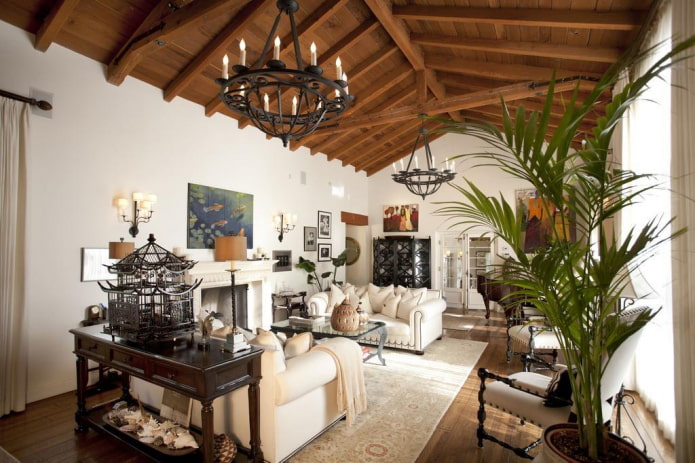
 10 practical tips for arranging a small kitchen in the country
10 practical tips for arranging a small kitchen in the country
 12 simple ideas for a small garden that will make it visually spacious
12 simple ideas for a small garden that will make it visually spacious



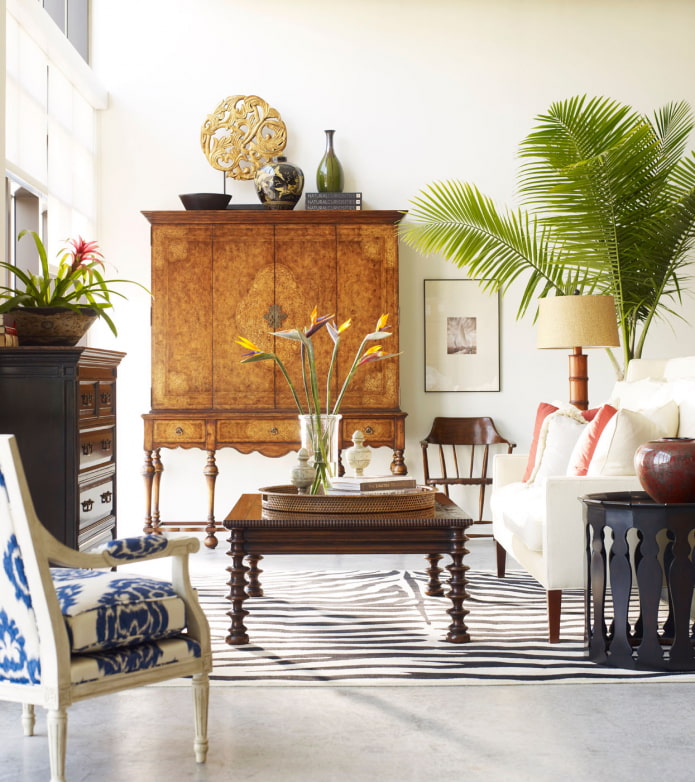
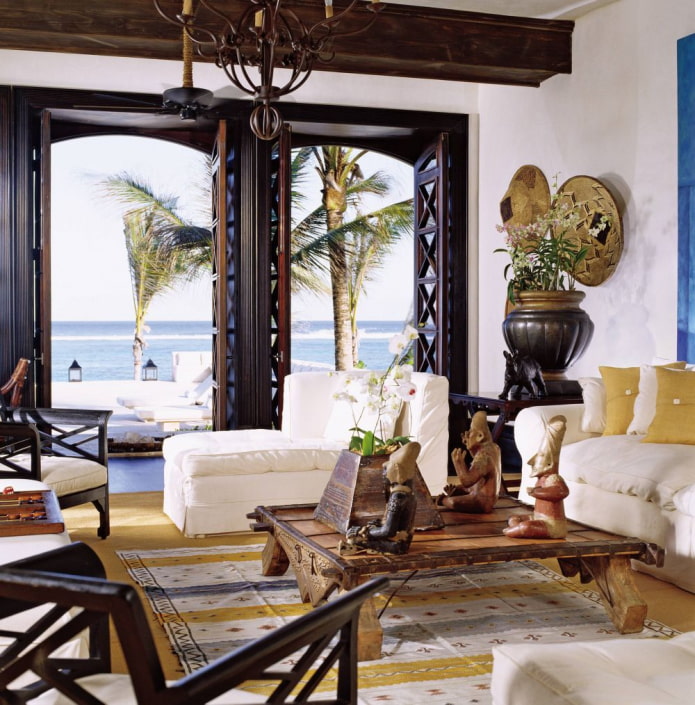
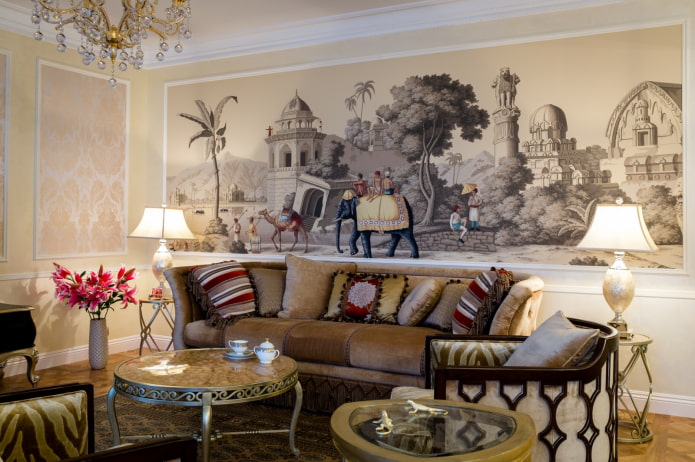
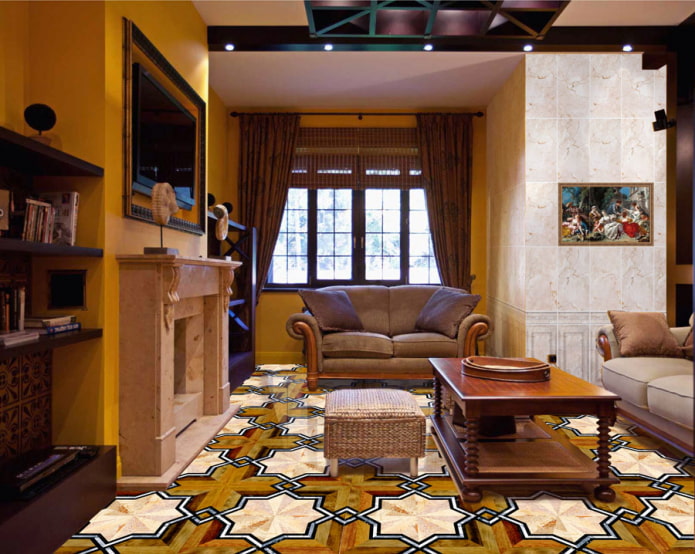

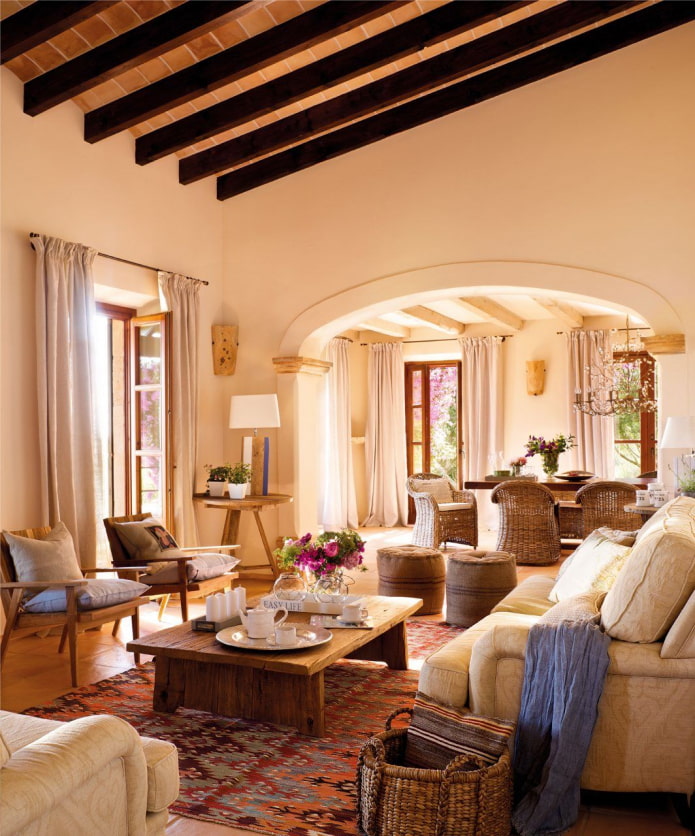

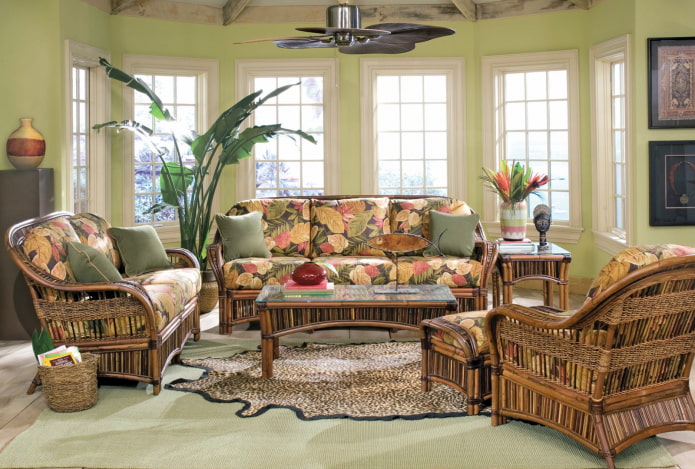
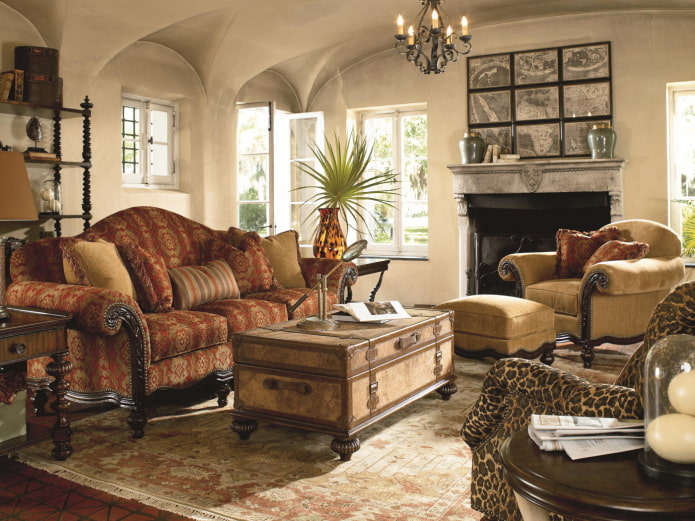
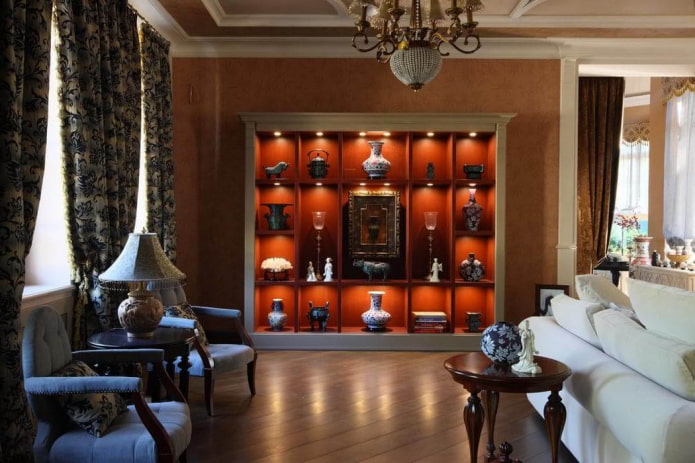
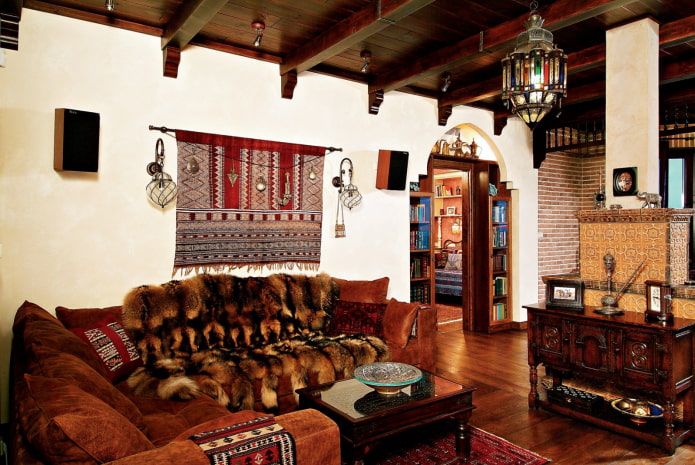
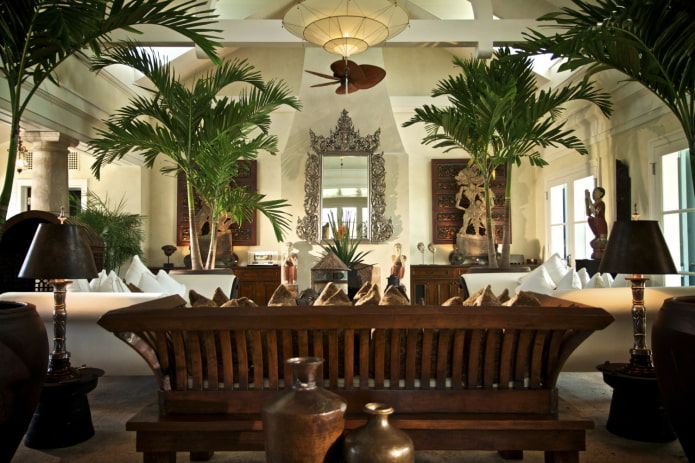
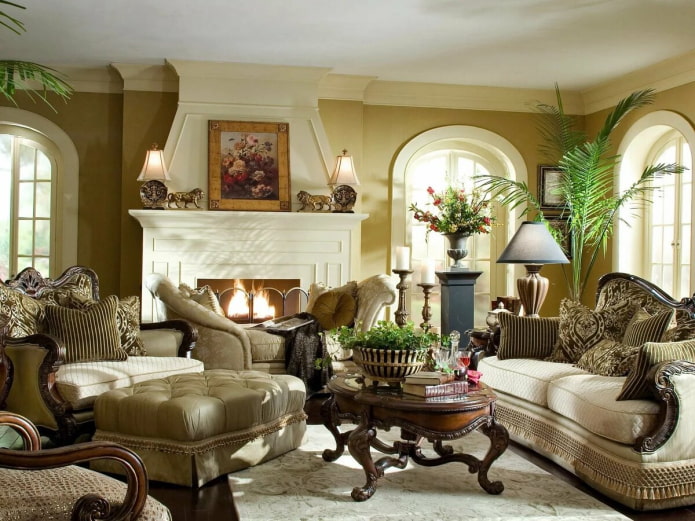
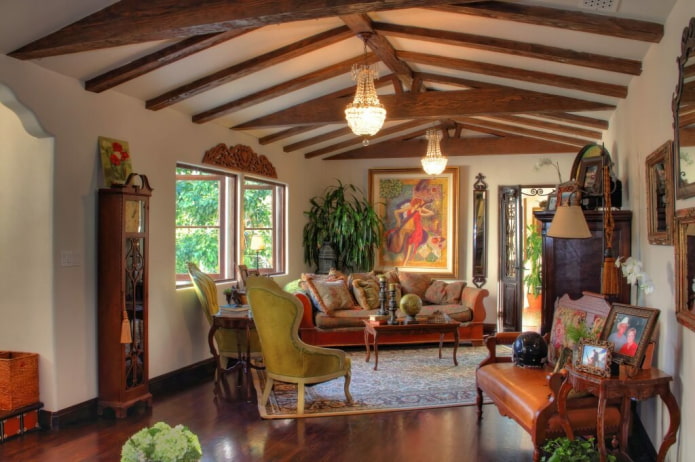

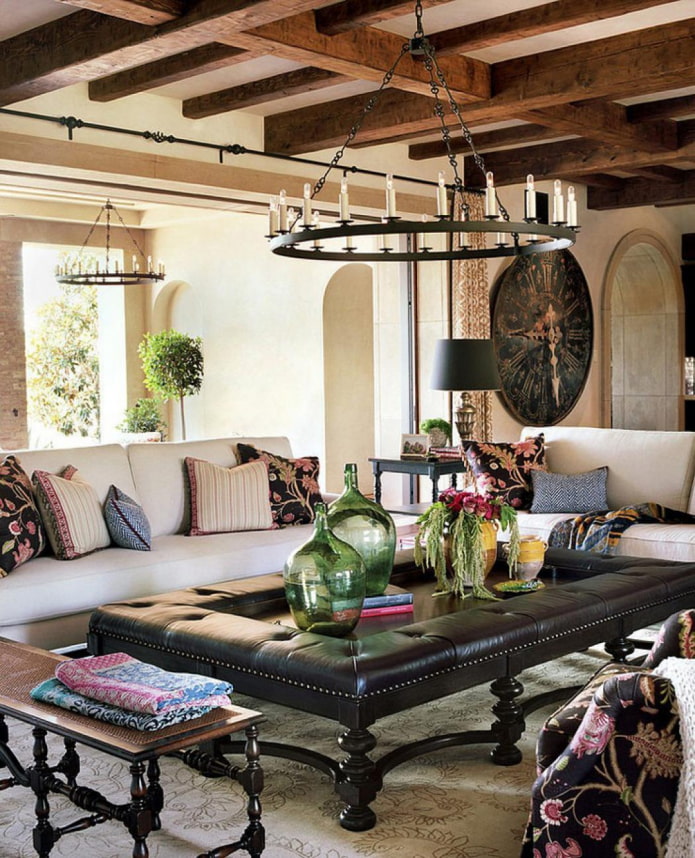
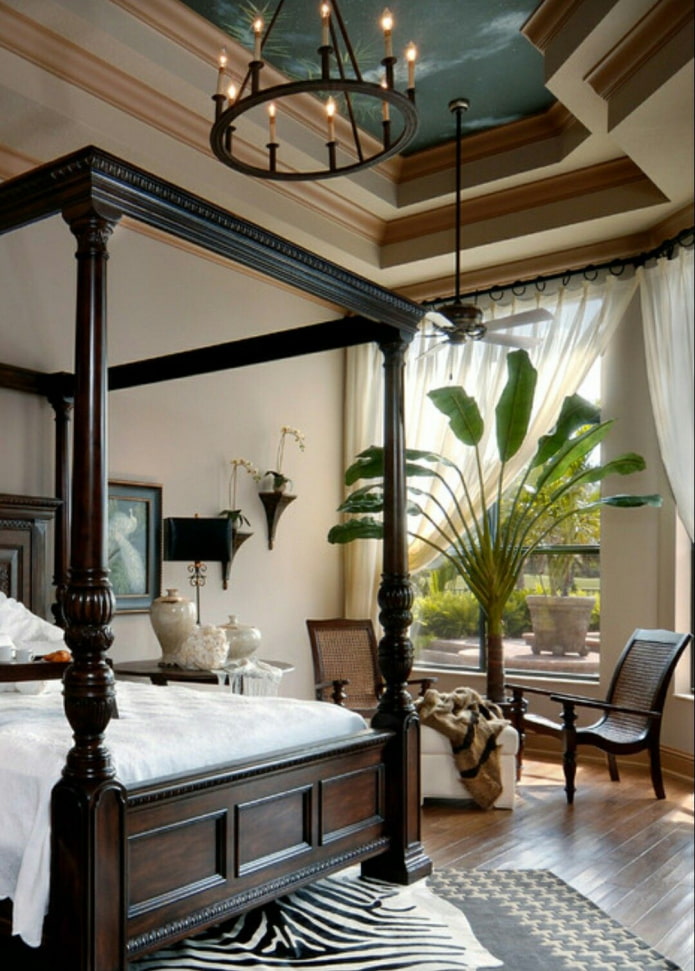
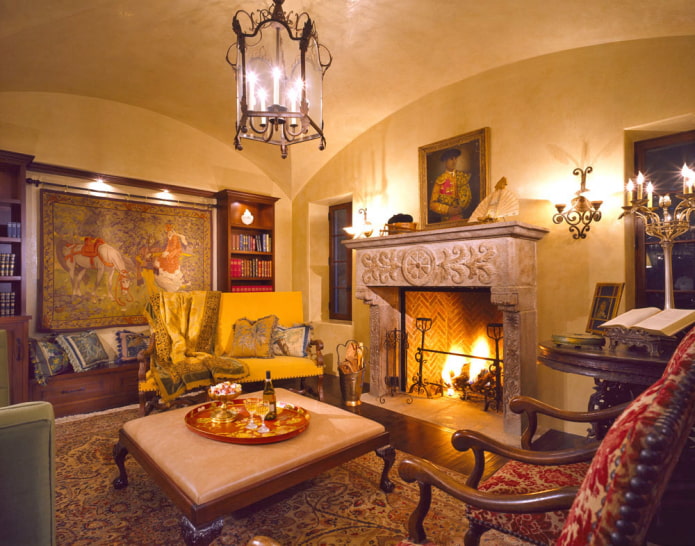

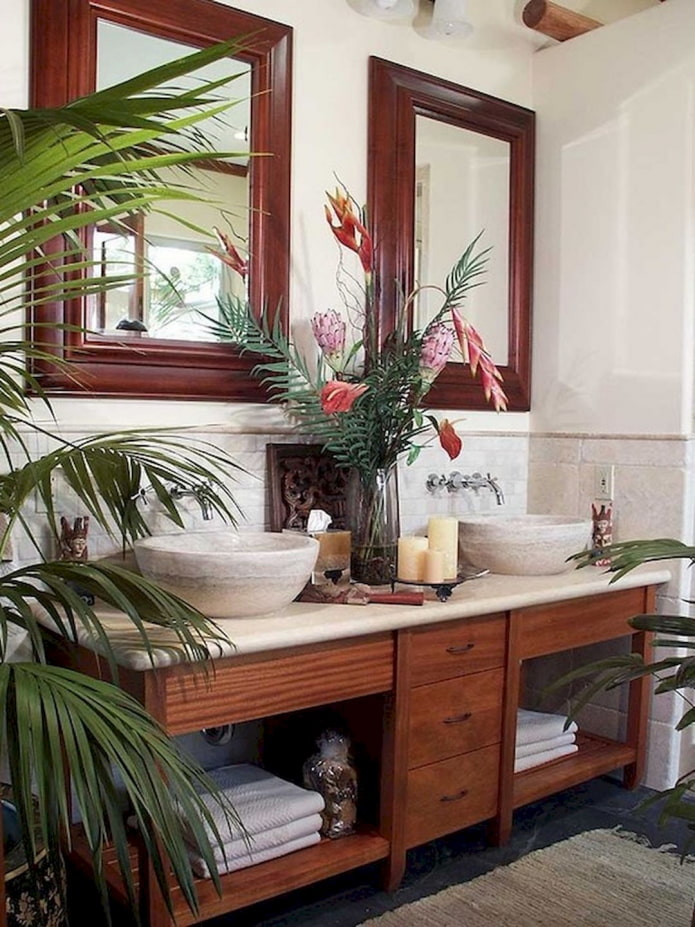
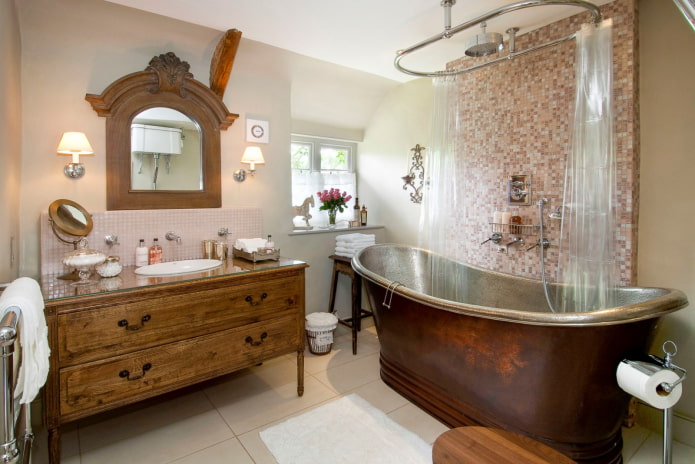
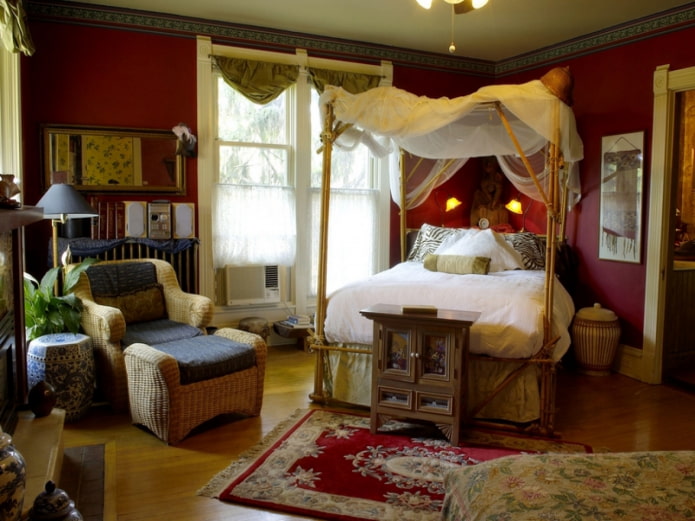

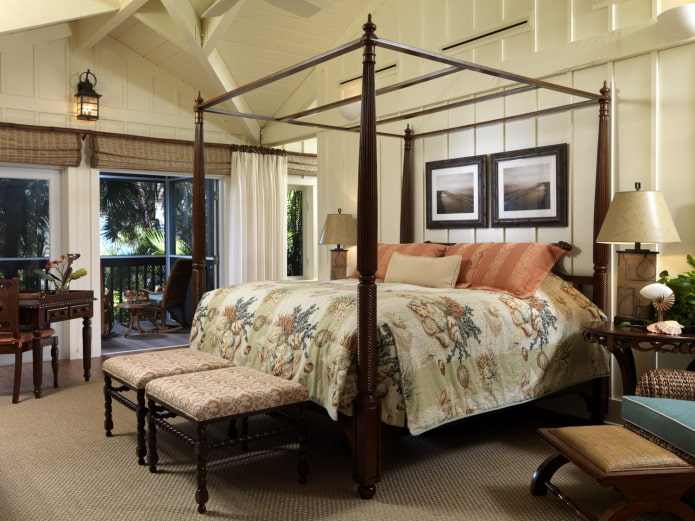

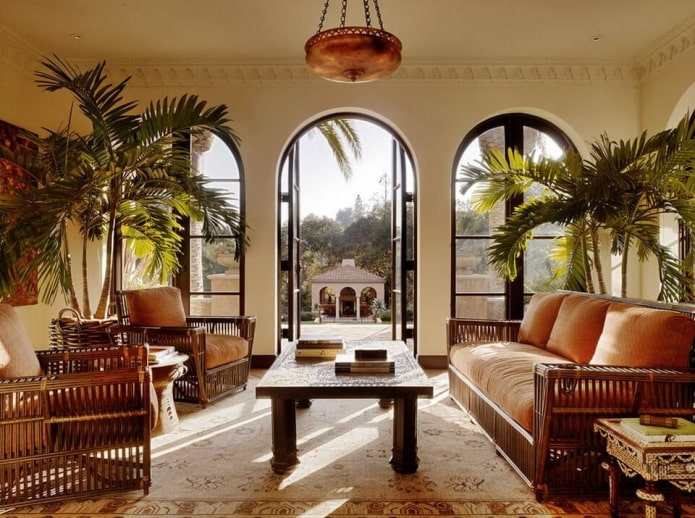
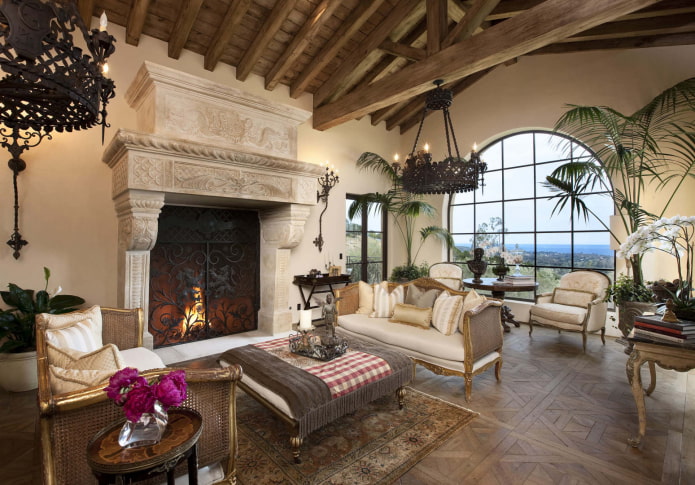

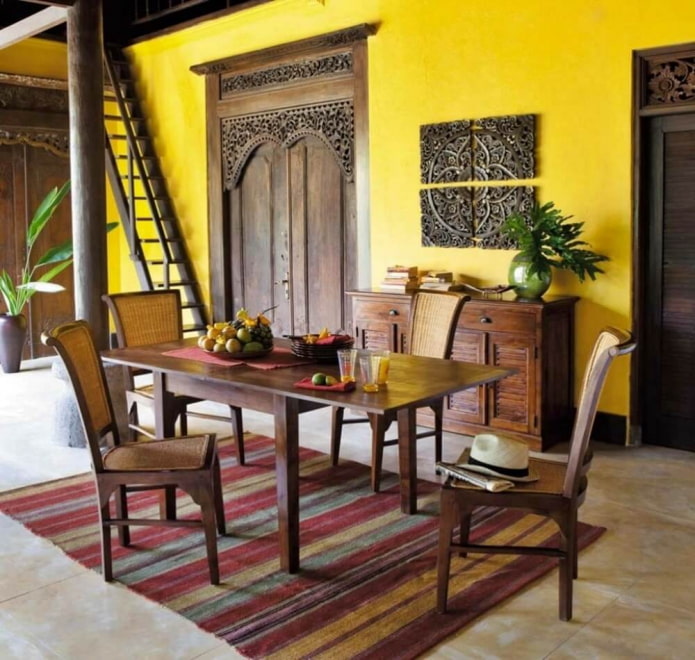

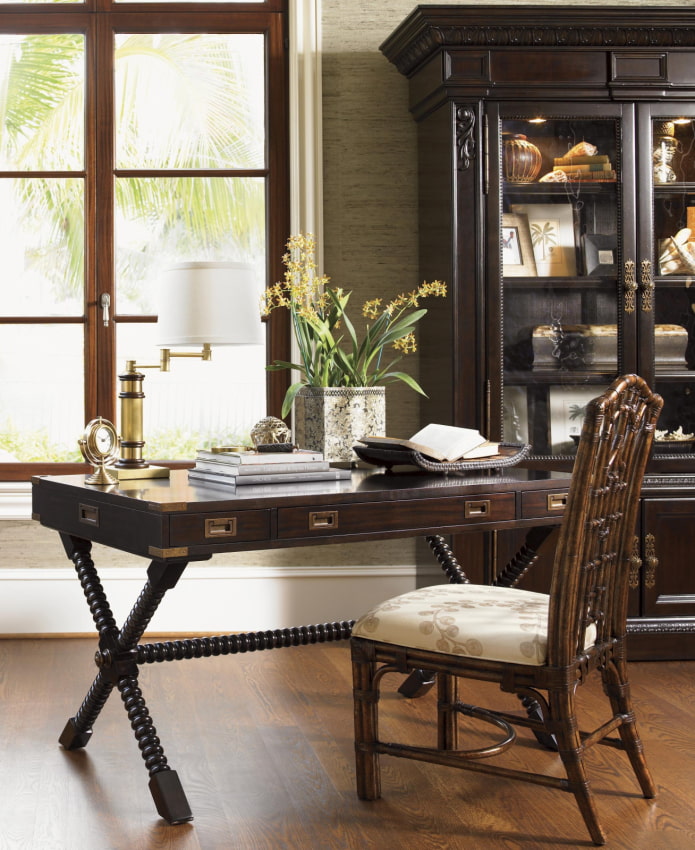

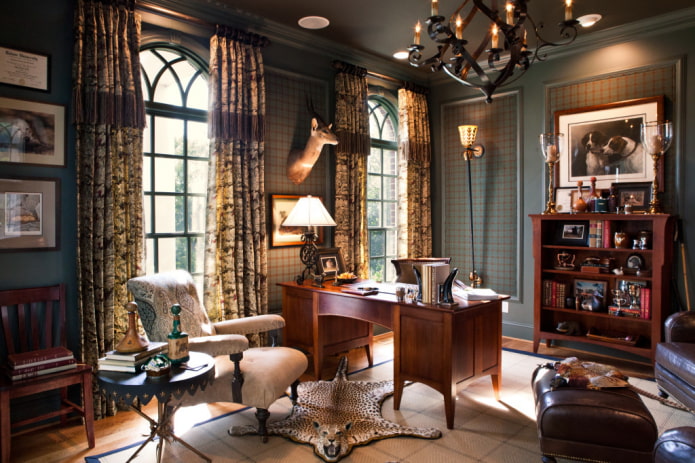

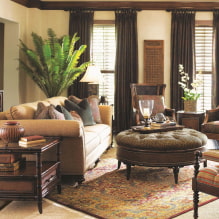

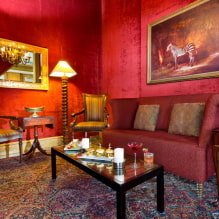
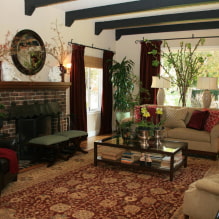
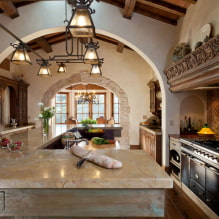
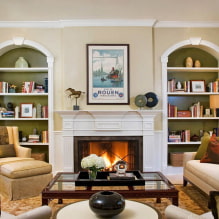
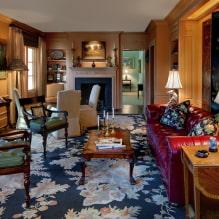

 13 bad habits a good housewife shouldn't have
13 bad habits a good housewife shouldn't have 24/7 home cleanliness - 4 secrets for the perfect housewife
24/7 home cleanliness - 4 secrets for the perfect housewife 6 hotels in Sochi that will give odds to the promoted foreign hotels
6 hotels in Sochi that will give odds to the promoted foreign hotels Top 10 interior design trends 2020
Top 10 interior design trends 2020 Rating of cheap TVs with Smart-TV
Rating of cheap TVs with Smart-TV New Year's LED garlands on AliExpress - we disassemble while it's hot, so that it's bright at home
New Year's LED garlands on AliExpress - we disassemble while it's hot, so that it's bright at home